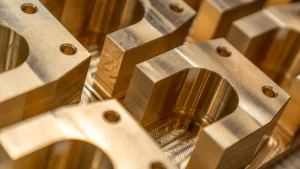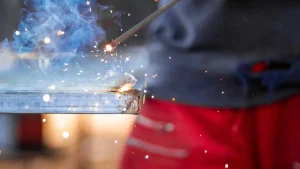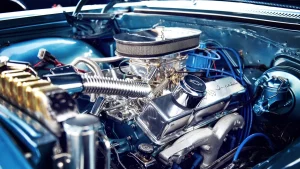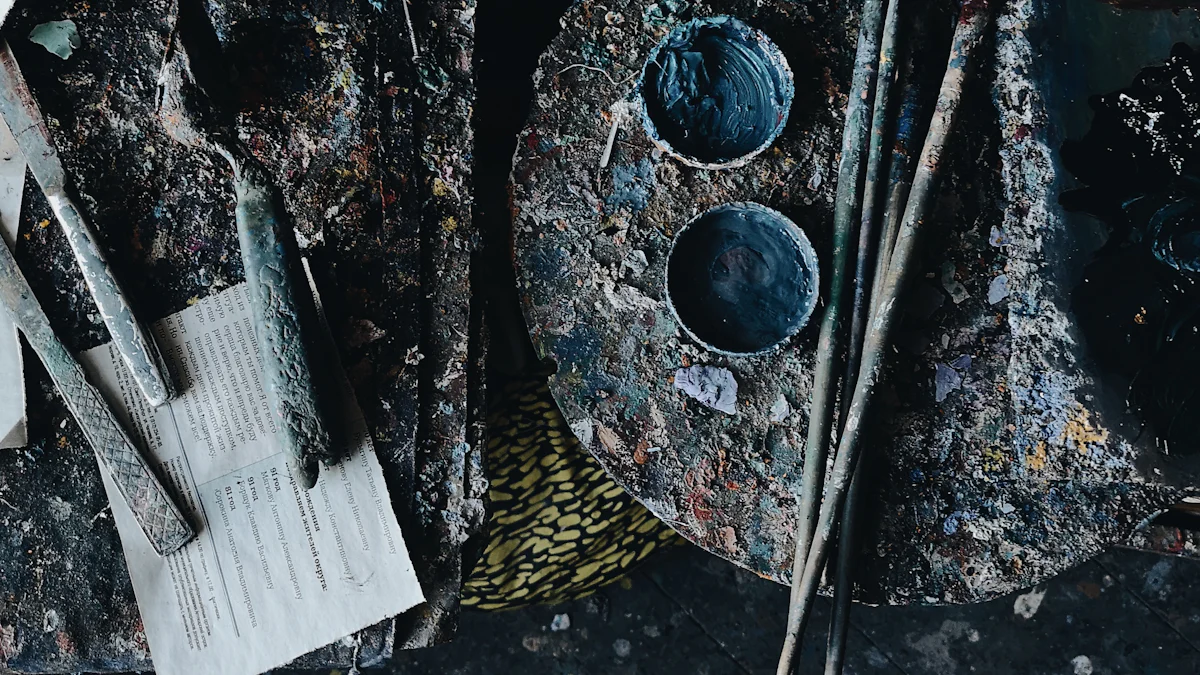
Choosing the right etching tray can make or break your project. The tray you pick directly impacts the precision of your results and ensures your workspace stays safe. You need to think about factors like how well the tray works with your materials, its size, and how durable it is. A good tray also saves you time by being easy to clean. Whether you’re a hobbyist or a professional, finding the perfect etching tray sets you up for success.
要点
- Understand your project needs by considering the materials and methods you will use, as this will guide your choice of etching tray.
- Choose the right material for your tray: high-density polyethylene for chemical etching, stainless steel for heat resistance, and glass for non-reactive surfaces.
- Select a tray size that matches your project dimensions to ensure efficient use of space and materials.
- Prioritize durability and ease of maintenance; a sturdy tray saves time and enhances your workflow.
- Ensure safety with features like non-slip bases and leak-proof designs to prevent accidents during your etching process.
- For hobbyists, lightweight plastic trays are affordable and practical, while professionals should invest in heavy-duty options for frequent use.
- Regularly clean and store your etching tray properly to extend its lifespan and maintain a safe workspace.
Understanding Your Project Needs
Choosing the right etching tray starts with understanding your project’s specific requirements. Every project is unique, and the materials, methods, and frequency of use all play a role in determining the best tray for you. Let’s break it down step by step.
Identifying the Material You Are Etching
The material you’re working with directly impacts the type of etching tray you’ll need. Different materials react differently to etching processes, so it’s important to choose a tray that complements your medium.
Metals (e.g., copper, brass, aluminum)
If you’re etching metals like copper, brass, or aluminum, you’ll need a tray that can handle chemical reactions. These materials often require strong etching solutions, so look for trays made from chemical-resistant materials like high-density polyethylene. This ensures the tray won’t degrade or react with the solution, keeping your workspace safe.
Non-metals (e.g., glass, plastic, wood)
For non-metal materials such as glass, plastic, or wood, the requirements may vary. Glass etching often involves abrasive or chemical methods, so a sturdy and stable tray is essential. Plastic and wood may need gentler techniques, making lightweight and easy-to-clean trays a practical choice. Always match the tray’s material to the sensitivity of your project’s medium.
Determining the Etching Method
Your etching method also plays a big role in selecting the right tray. Each method has unique demands, and your tray should support the process effectively.
Chemical etching
Chemical etching involves using solutions that can be corrosive. A leak-proof and chemical-resistant tray is a must. High-density polyethylene trays are a popular choice for this method due to their durability and resistance to harsh chemicals.
Electrolytic etching
Electrolytic etching uses an electric current to create designs. This method requires a tray that can safely hold liquids and conduct electricity without risk. Look for trays with non-conductive bases to ensure safety during the process.
Laser etching
Laser etching doesn’t involve liquids, but heat resistance becomes critical. If you’re using a laser engraver, opt for a tray made from heat-resistant materials like stainless steel. This prevents warping or damage during the process.
使用頻度
How often you plan to use your etching tray will influence your choice. Consider whether you’re working on a one-time project or need a tray for regular use.
One-time projects vs. frequent use
For one-time projects, affordability and convenience matter most. Lightweight plastic trays are a great option for occasional use. However, if you’re etching frequently, invest in a durable tray that can withstand repeated exposure to chemicals or heat.
Professional vs. hobbyist needs
Professionals often require heavy-duty trays that can handle large-scale or complex projects. These trays should offer durability, stability, and compatibility with various materials. Hobbyists, on the other hand, may prioritize ease of use and affordability. Compact trays with simple designs work well for smaller, less demanding projects.
By understanding your project’s materials, methods, and usage frequency, you can confidently choose an etching tray that meets your needs. This thoughtful approach ensures better results and a smoother workflow.
Key Features to Look for in an Etching Tray

When selecting an etching tray, focusing on its key features ensures you get the best results for your projects. Let’s explore the essential aspects you should evaluate before making a choice.
素材適合性
The material of your etching tray plays a significant role in its performance. Choosing the right material ensures safety and durability during your etching process.
High-density polyethylene for chemical resistance
If you’re working with chemical etching, high-density polyethylene (HDPE) trays are a reliable option. These trays resist corrosion and won’t react with harsh chemicals. This makes them ideal for handling strong etching solutions without compromising safety or quality.
Stainless steel for durability and heat resistance
For projects involving heat, stainless steel trays are a smart choice. They can withstand high temperatures without warping or degrading. Stainless steel also offers excellent durability, making it suitable for frequent use or professional settings.
Size and Depth
The size and depth of your etching tray directly affect how well it accommodates your project. Picking the right dimensions ensures a smoother workflow.
Matching tray size to project dimensions
Always match the tray size to the dimensions of your project. A tray that’s too small can limit your workspace, while an oversized tray may waste materials. Measure your project carefully and choose a tray that fits comfortably.
Ensuring adequate depth for solution immersion
Depth matters when using etching solutions. A shallow tray might not fully immerse your materials, leading to uneven results. Opt for a tray with enough depth to submerge your project completely, ensuring consistent and precise etching.
Durability and Maintenance
A durable and easy-to-maintain etching tray saves you time and money in the long run. It also keeps your workspace efficient and hassle-free.
Sturdy construction for repeated use
If you plan to use your etching tray frequently, prioritize sturdy construction. Trays made from high-quality materials can handle repeated exposure to chemicals, heat, or wear without breaking down.
Easy-to-clean surfaces to streamline workflow
Cleaning your etching tray should be quick and straightforward. Smooth, non-porous surfaces are easier to clean and prevent residue buildup. This feature helps you maintain a tidy workspace and reduces preparation time for your next project.
By focusing on these features, you can confidently choose an etching tray that aligns with your needs. Whether you’re a hobbyist or a professional, the right tray enhances your results and simplifies your process.
Safety and Stability
When working with etching solutions, safety and stability should always be a top priority. The right etching tray can help you avoid accidents and ensure a smooth workflow. Let’s explore two essential features that enhance safety and stability.
Non-slip bases to prevent accidents
A non-slip base keeps your etching tray steady while you work. It prevents the tray from sliding around on your workspace, especially when handling liquids or delicate materials. This feature is particularly useful if you’re working on a smooth or slippery surface. A stable tray reduces the risk of spills, which can save you from potential messes or injuries. Always check for trays with rubberized or textured bases to keep everything securely in place.
Leak-proof design for secure handling of solutions
A leak-proof design ensures that your etching solutions stay where they belong—inside the tray. This feature is crucial when working with chemicals that could damage your workspace or pose safety risks. A well-sealed tray minimizes the chance of leaks, giving you peace of mind during your project. Look for trays with reinforced edges or seamless construction to handle liquids securely. This small detail can make a big difference in maintaining a safe and efficient workspace.
By prioritizing safety and stability, you can focus on your creative process without worrying about unnecessary hazards. A reliable etching tray not only protects you but also enhances the overall quality of your work.
Recommendations Based on Common Applications
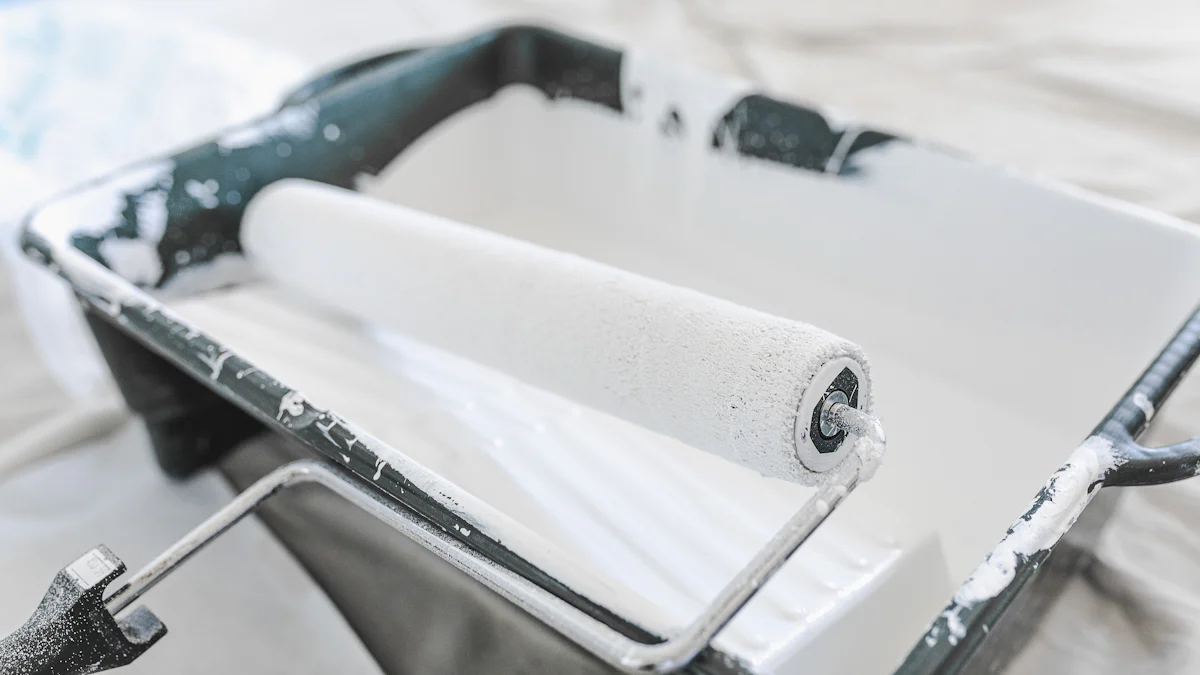
Choosing the right etching tray depends on how you plan to use it. Whether you’re a hobbyist, a professional, or working with specific etching methods, there’s a tray that fits your needs perfectly. Let’s explore some recommendations tailored to common applications.
For Hobbyists and Small-Scale Projects
Compact plastic trays for affordability and ease of use
If you’re just starting or working on small projects, compact plastic trays are a great choice. They’re affordable, lightweight, and easy to handle. These trays work well for simple tasks where you don’t need heavy-duty materials. You can find them in various sizes, so pick one that matches your project dimensions. Their low cost makes them ideal for experimenting without worrying about breaking the bank.
Lightweight options for occasional use
For occasional use, lightweight trays offer convenience and practicality. They’re easy to store and transport, making them perfect for hobbyists who don’t etch regularly. These trays often come in materials like polypropylene, which resists mild chemicals and is simple to clean. If you’re looking for something functional yet low-maintenance, lightweight trays are a solid option.
For Professional or Large-Scale Projects
Heavy-duty stainless steel trays for industrial durability
Professionals working on large-scale or demanding projects need something more robust. Heavy-duty stainless steel trays provide unmatched durability and heat resistance. They can handle frequent use and exposure to harsh chemicals without showing wear. These trays are a long-term investment for professionals who prioritize reliability and performance. Their sturdy construction ensures they stay stable even during intensive processes.
Custom-sized trays for specialized applications
Sometimes, standard trays just don’t cut it. For specialized applications, custom-sized trays offer the flexibility you need. You can have them designed to fit unique project dimensions or specific etching methods. Custom trays often come in materials like stainless steel or high-density polyethylene, ensuring they meet the demands of your work. If precision and adaptability are crucial, custom trays are worth considering.
For Specific Etching Methods
Glass trays for chemical etching
Chemical etching often requires trays that resist corrosion and maintain stability. Glass trays are an excellent choice for this method. They don’t react with most chemicals, ensuring your solutions stay effective. Glass also provides a smooth surface, making it easier to clean after use. If you’re working with chemical etching, a glass tray can help you achieve consistent results.
Heat-resistant trays for laser etching
Laser etching generates heat, so you need a tray that can handle high temperatures. Heat-resistant trays, often made from stainless steel, are perfect for this purpose. They prevent warping or damage during the process, ensuring your workspace remains safe. These trays also offer durability, making them suitable for frequent use. If laser etching is your focus, investing in a heat-resistant tray is essential.
By selecting the right etching tray for your specific application, you can improve your workflow and achieve better results. Whether you’re a hobbyist, a professional, or using a specialized method, there’s a tray designed to meet your needs.
Maintenance and Safety Tips for Your Etching Tray
Keeping your etching tray in top condition ensures it lasts longer and performs better. Proper maintenance also keeps your workspace safe and efficient. Let’s dive into some practical tips to clean, store, and use your tray safely.
Cleaning and Storing Your Tray
Taking care of your etching tray starts with cleaning it the right way and storing it properly. These steps help you avoid damage and ensure the tray is ready for your next project.
Proper cleaning methods for different materials
Different tray materials require specific cleaning techniques. For plastic trays, use mild soap and warm water. Avoid abrasive scrubbers that could scratch the surface. If you’re working with stainless steel trays, a non-abrasive cleaner works best. Wipe them down with a soft cloth to prevent streaks or residue. Glass trays need extra care. Use a gentle glass cleaner and rinse thoroughly to remove any chemical traces. Always dry your tray completely after cleaning to prevent moisture buildup.
Storing in a dry, chemical-free environment
Where you store your tray matters. Keep it in a dry area to avoid rust or mold, especially if it’s made of metal or glass. Make sure the storage space is free from chemicals that could spill or react with the tray. Stack lightweight trays carefully to prevent warping. For heavier trays, store them flat to maintain their shape. Proper storage not only protects your tray but also saves you time when setting up for your next project.
Ensuring Safe Usage
Safety should always come first when working with etching solutions or tools. Following these tips helps you avoid accidents and keeps your workspace hazard-free.
Wearing protective gear when handling chemicals
Always wear protective gear when using chemicals with your etching tray. Gloves protect your hands from corrosive solutions, while safety goggles shield your eyes from splashes. A chemical-resistant apron adds an extra layer of protection for your clothing and skin. Don’t skip this step—it’s better to be over-prepared than to risk injury.
Working in a well-ventilated area to avoid fumes
Etching solutions can release harmful fumes. Work in a space with good ventilation to keep the air fresh and safe to breathe. Open windows or use a fan to circulate air. If you’re working indoors, consider using a fume extractor for added safety. Proper ventilation not only protects your health but also makes the etching process more comfortable.
By following these maintenance and safety tips, you can extend the life of your etching tray and create a safer workspace. A little effort goes a long way in ensuring your projects run smoothly and efficiently.
Choosing the right etching tray can transform your projects. By focusing on your specific needs, you ensure better results and a safer workspace. Pay attention to factors like material compatibility, size, and durability. These details make a big difference in performance and ease of use. Take your time to evaluate your options. The right tray not only simplifies your workflow but also helps you achieve professional-quality outcomes. Start with what works best for your projects, and you’ll see the benefits in no time.
よくあるご質問
What is the best material for an etching tray?
The best material depends on your project. High-density polyethylene works well for chemical etching because it resists corrosion. Stainless steel is ideal for heat-intensive methods like laser etching due to its durability and heat resistance. Glass trays suit chemical etching when you need a non-reactive surface.
How do I choose the right size for my etching tray?
Pick a tray that matches your project dimensions. Ensure the tray is large enough to fit your materials comfortably without overcrowding. For projects involving liquids, choose a tray with enough depth to fully immerse your materials in the solution.
Can I use the same tray for different etching methods?
You can, but it depends on the tray’s material and the methods you use. For example, a stainless steel tray can handle both heat and chemicals, making it versatile. However, using a single tray for multiple methods may require thorough cleaning to avoid cross-contamination.
How do I clean my etching tray after use?
Use cleaning methods suited to the tray’s material. For plastic trays, wash with mild soap and warm water. Stainless steel trays need a non-abrasive cleaner and a soft cloth. Glass trays require gentle glass cleaners. Always dry the tray completely to prevent damage or residue buildup.
Are plastic trays safe for chemical etching?
Plastic trays made from high-density polyethylene or polypropylene are safe for chemical etching. These materials resist corrosion and won’t react with most chemicals. Avoid using low-quality plastics that may degrade or warp over time.
What safety precautions should I take when using an etching tray?
Always wear protective gear like gloves, goggles, and a chemical-resistant apron. Work in a well-ventilated area to avoid inhaling fumes. Ensure your tray has a non-slip base and a leak-proof design to prevent accidents.
Can I use a regular household tray for etching?
Using a household tray isn’t recommended. Most household trays lack the durability, chemical resistance, or heat tolerance needed for etching. Investing in a purpose-built etching tray ensures better results and a safer workspace.
How do I store my etching tray properly?
Store your tray in a dry, clean area away from chemicals. Keep lightweight trays stacked carefully to avoid warping. For heavier trays, store them flat to maintain their shape. Proper storage extends the life of your tray and keeps it ready for your next project.
What’s the difference between a hobbyist tray and a professional tray?
Hobbyist trays are usually lightweight, affordable, and designed for occasional use. Professional trays are more durable, often made from stainless steel or high-density polyethylene, and built to handle frequent or large-scale projects. Choose based on your needs and how often you plan to use the tray.
How long does an etching tray typically last?
The lifespan of an etching tray depends on its material and how you use it. High-quality trays made from stainless steel or high-density polyethylene can last for years with proper care. Regular cleaning and safe storage help extend the tray’s life.

